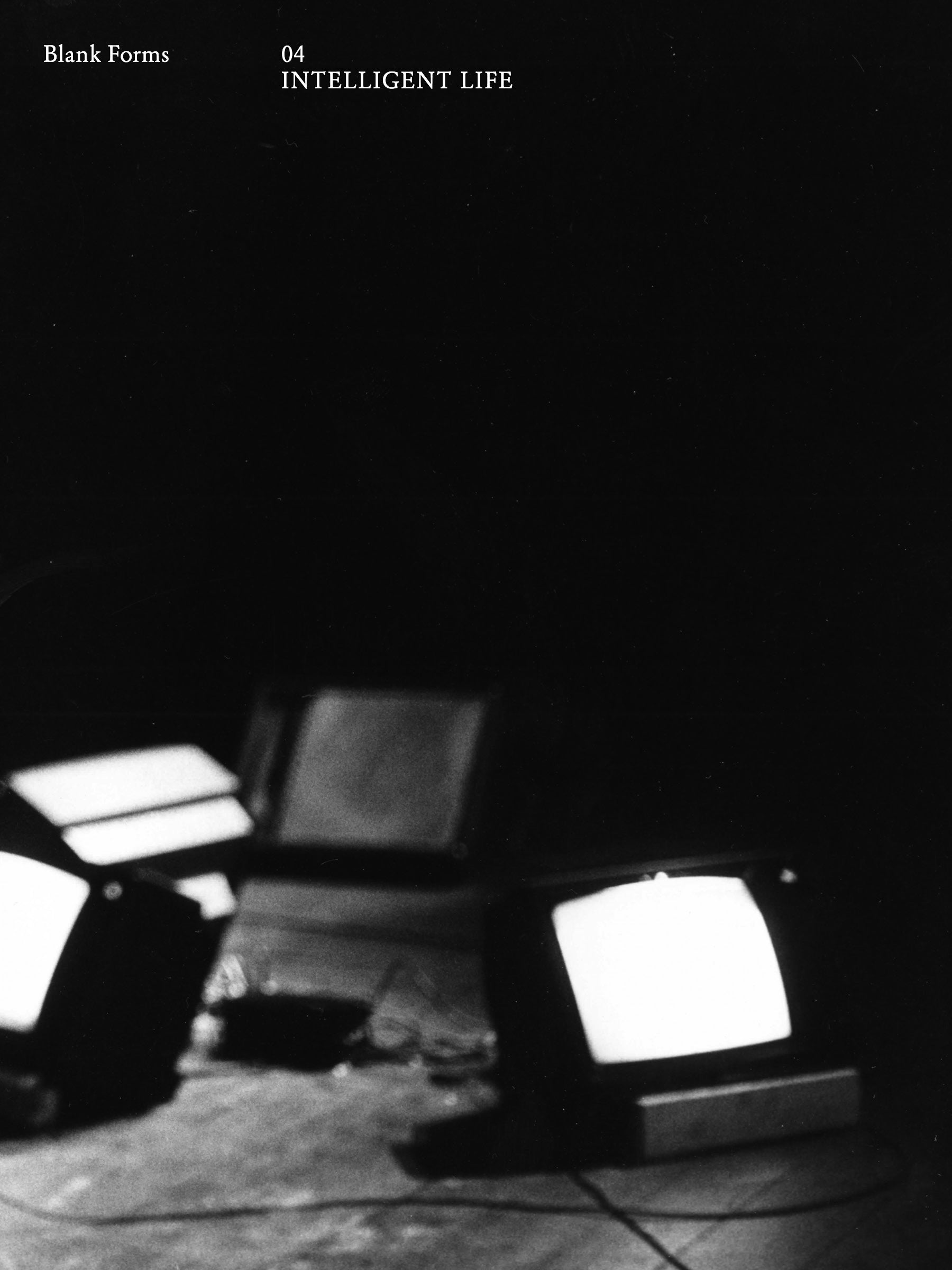
Blank Forms 04: Intelligent Life
Sold out
Edited by Lawrence Kumpf. Contributors and featured artists include Onyx Ashanti, Amy Cimini, Marcia Douglas, Kazuo Imai, Werner Durand, Peter Gente, Heidi Paris, Robert Ashley, “Blue” Gene Tyranny, Spencer Gerhardt, Adrian Rew, Paul Cummings, and Walter De Maria.
Taking its name from Maryanne Amacher’s visionary, unrealized opera, the fourth issue of Blank Forms’ journal, Intelligent Life, features a select group of unpublished, newly translated, or otherwise rare texts that augment our organization’s concerts, publications, exhibitions, and archival initiatives. The issue opens with a short literary essay by the author Marcia Douglas, in which a deep bass riddim guides a deaf narrator and a reincarnated Bob Marley through important sites in Rastafarianism’s development. Next come two interviews with crucial (though very different) figures in postwar avant-garde music: the Japanese guitarist Kazuo Imai and the American composer Robert Ashley, along with pianist and frequent collaborator “Blue” Gene Tyranny. The previously unpublished interview with Imai was conducted by Blank Forms’ Editor and Artistic Director Lawrence Kumpf during Imai’s first trip to the United States, in 2018, and finds the artist reflecting on recent work with the collective Marginal Consort as well as his foundational experiences playing with two other titans of Japanese experimentalism, Takehisa Kosugi and Masayuki Takayanagi. The interview with Ashley and “Blue” Gene, meanwhile, first published in German in 1984 on the occasion of a staging of Ashley’s opera Atalanta, was translated for the first time into English for this publication.
Intelligent Life continues with a series of longer pieces showcasing a diverse set of complex practices and histories, beginning with that of Detroit-based artist Onyx Ashanti. Onyx contributes his own Octavia Butler-referencing “sonocybernetic manifesto,” first published online in 2016, which exists simultaneously as theoretical treatise, memoir, and practical guide to his idiosyncratic technology-based practice. The manifesto is bolstered in this issue by a rare and extensive interview, conducted by Blank Forms’ Curatorial Assistant Adrian Rew in 2018. Following this exploration of Onyx’s life and work, the issue dives deeper into mathematics, with a comprehensive essay on Catherine Christer Hennix’s engagement with intuitionism and other esoteric approaches to math, written by the mathematician and musician Spencer Gerhardt. Gerhardt’s lucid, previously unpublished essay serves as a necessary complement to Blank Forms Editions’ forthcoming collection of Hennix’s abstruse, mostly unpublished body of writing, Poësy Matters and Other Matters.
The issue continues with a sort of titular essay, a rich analysis of Amacher’s Intelligent Life—the first such piece on this work—by Amacher scholar Amy Cimini. An incredibly prescient work that sought to upend any remaining vestiges of traditional operatic form and staging, Intelligent Life tells the story, set in 2021, of employees at Supreme Connections LLC, a futurist sonic entertainment corporation that formed following the collapse of a failed algorithmic music recommendation service. Cimini traces the technical and theoretical innovations with which Amacher imbued the work, situating it amid a detailed explication of Amacher’s still-overlooked practice. Intelligent Life—the journal issue—then concludes with a lengthy interview with the artist Walter De Maria. One of the few interviews De Maria gave in his lifetime, this one, created for the Archives of American Art in 1972, sheds significant light on De Maria’s early intellectual and artistic development as well as his work as a musician. Although he largely stopped playing music by 1970, and although few recordings of his efforts exist, De Maria played alongside musicians ranging from Lou Reed to Don Cherry to Henry Flynt, establishing himself early on as a force in jazz and avant-garde circles in both the Bay Area and New York City.
Taken together, the texts compiled here present a kaleidoscopic view of the last fifty years of experimental art and music in the United States and beyond, mining the conceptual, technical, historical, or otherwise marginal details undergirding artists’ lives, ideas, and approaches that may otherwise remain buried.